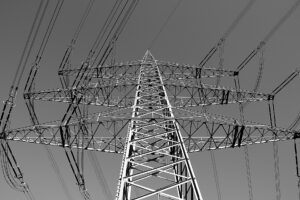The infrastructure of modern cities is becoming increasingly more complex; it includes roads, pavements, railways, tunnels, and ducts. These structures are not only made of composite materials in which behavior under harsh environments can often be unpredictable, but they also interconnect. These systems are subjected to extreme environmental conditions, like severe winds, earthquakes, flooding, etc.; due to this, they are susceptible to catastrophic failure.
One of the main aspects of any smart city is safety. The transportation network needs to be assessed through gathering data on roadway conditions, like dangerous conditions due to roadway degradation, icing, and hydroplaning. Autonomous data gathering is vital for the safety and efficiency of the transportation network. The data gathered gives information on the inevitable roadway and infrastructure degradation over time, which enables informed decisions for life extension or timely replacement of these critical systems.
Computational tools are often not adequate for the task of condition assessment of complex infrastructure systems. These tools lack the capability to reliably predict response to extreme events. Therefore, a distributed sensor system is needed in order to ensure the safety and longevity of infrastructures in a smart city. The sensing system should also be capable of providing critical information to computational models to enable informed maintenance planning as opposed to the reactive maintenance schemes currently employed.
Fiber optic sensing systems provide the most efficient and economical solution. Fiber optic systems allow for the assessment of thousands of sensors in real-time on a single cable. FBG sensor systems are well-suited to the detection and recording
of critical structural response characteristics as well as environmental indicators that lead to degradation. FBG strain sensors are useful in the process of assessing the response to stressors, e.g. traffic, wind, earthquakes, blast events, support settlement, etc. Distributed acoustic sensing is ideal for the direct assessment of localized damage in steel and reinforced concrete that may occur due to seismic events, fatigue cracking, corrosion, etc. FBG sensors are also ideal for monitoring of weather conditions, as the presence of entrapped moisture in asphalt paving systems, as they are often the main cause of the rapid degradation.
Optromix is a fast-growing vendor of fiber Bragg grating (FBG) products line: FBG sensors, FBG interrogators, and multiplexers, Distributed Temperature Sensing (DTS) systems. We create and supply a broad variety of top-notch fiber optic solutions for the monitoring of various facilities all over the world. We provide a distributed acoustic sensing system that is much less expensive than other analogous systems present on the market.
If you are interested in Optromix distributed acoustic sensing system or Optromix FBG sensor systems, please contact us at info@optromix.com


 The increased demand for energy due to the growing population has forced the industry to develop new sustainable ways to produce energy. Among new and developing energy technologies are wind turbines. They are widely used to produce energy in many parts of the world. However, there are multiple concerns that are yet to be solved, one of them has been the lack of effective monitoring devices and techniques.
The increased demand for energy due to the growing population has forced the industry to develop new sustainable ways to produce energy. Among new and developing energy technologies are wind turbines. They are widely used to produce energy in many parts of the world. However, there are multiple concerns that are yet to be solved, one of them has been the lack of effective monitoring devices and techniques.  Electricity is the backbone of modern civilization; it holds the development of both economy and technology. It is established that it is no longer an option to rely on existing infrastructure as there is a need to constantly evolve and adapt to the growing demand of the populace. The state of current infrastructure is weakened by its age of installation or by the growing demand of the population. The breakdown is imminent as it cannot bear the burden of previous years.
Electricity is the backbone of modern civilization; it holds the development of both economy and technology. It is established that it is no longer an option to rely on existing infrastructure as there is a need to constantly evolve and adapt to the growing demand of the populace. The state of current infrastructure is weakened by its age of installation or by the growing demand of the population. The breakdown is imminent as it cannot bear the burden of previous years.